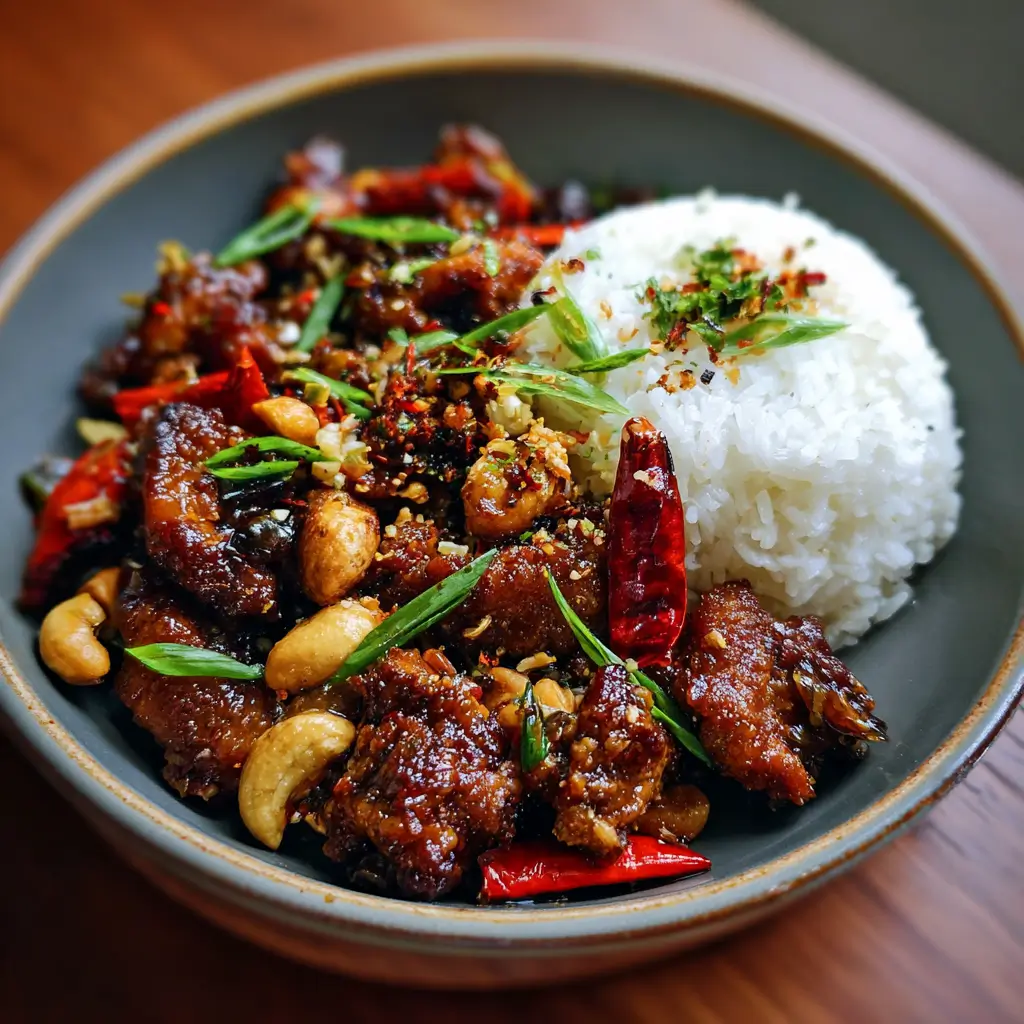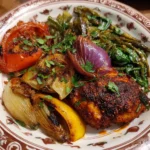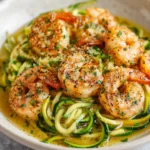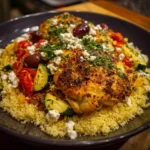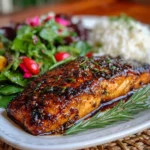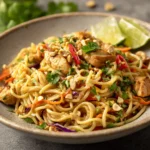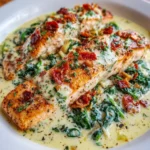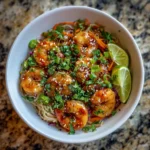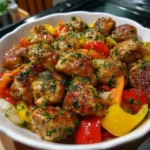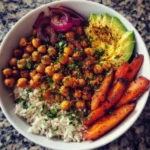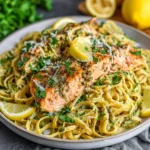Spicy Kung Pao Chicken: A Fiery Delight from Sichuan Cuisine
Kung Pao Chicken, known in Chinese as Gong Bao Ji Ding, is one of the most iconic dishes in Chinese cuisine. Revered for its bold combination of heat, sweetness, tang, and umami, this dish has captivated palates around the world. While its origins trace back to the Qing Dynasty, today’s version—especially the spicy rendition—has evolved into a global favorite, particularly among lovers of fiery foods. This guide dives deep into every aspect of Spicy Kung Pao Chicken, from its storied history and essential ingredients to detailed cooking techniques, health benefits, variations, and expert tips for perfecting it at home.
The History of Kung Pao Chicken
The roots of Kung Pao Chicken are steeped in legend and regional pride. The dish is traditionally attributed to Ding Baozhen, a high-ranking official during the late Qing Dynasty (1820–1882), who served as a governor in Sichuan province. His title, “Ding Gongbao” (or “Palace Guardian”), is believed to be the origin of the name “Kung Pao.” As a native of Guizhou but later stationed in Sichuan, Ding was known for his love of spicy food and peanuts, both of which became signature elements of the dish.
Originally, the recipe likely featured chicken stir-fried with chili peppers, Sichuan peppercorns, and preserved vegetables. Over time, especially as the dish spread beyond China through Chinese-American restaurants, it underwent numerous adaptations. The Americanized versions often toned down the heat and added sugar or honey for sweetness. However, authentic Spicy Kung Pao Chicken remains true to its Sichuan heritage—bold, numbing, and intensely flavorful.
In 2018, the Sichuan Provincial Department of Commerce officially included Kung Pao Chicken in its list of “Top 10 Classic Sichuan Dishes,” cementing its status as a culinary treasure. Today, it’s enjoyed not only in China but across Asia, North America, Europe, and beyond, often served in upscale restaurants and humble takeouts alike.
Ingredients Breakdown: The Soul of the Dish
The magic of Spicy Kung Pao Chicken lies in its complex layering of flavors and textures. Each ingredient plays a crucial role in achieving the hallmark balance of mala (numbing and spicy) sensation that defines Sichuan cooking. Here’s a detailed breakdown of the core components:
- Chicken: Boneless, skinless chicken breast or thigh is typically used. Thighs are preferred for their juiciness and ability to hold up under high-heat stir-frying.
- Dry Red Chilies: Essential for authentic heat. These are usually broken into pieces and deseeded slightly to control spice levels. They infuse the oil with a smoky, fiery flavor.
- Sichuan Peppercorns: Not actual pepper, but the dried husks of a type of prickly ash. They deliver a unique tingling, numbing sensation (ma) that complements the chili heat (la).
- Peanuts: Roasted, unsalted peanuts add crunch and nuttiness. In some regions, walnuts or cashews are used as alternatives.
- Garlic and Ginger: Minced fresh garlic and ginger form the aromatic base, adding depth and warmth.
- Scallions: Green onions provide freshness and color, often sliced diagonally for visual appeal.
- Soy Sauce: Both light soy sauce (for saltiness) and dark soy sauce (for color and richness) are used.
- Chinkiang Vinegar (Chinese Black Vinegar): Offers a deep, malty tanginess that balances the heat and salt.
- Shaoxing Wine: A Chinese rice wine that tenderizes the chicken and enhances umami.
- Sugar: A small amount offsets the acidity and spice, rounding out the flavor profile.
- Cornstarch: Used to marinate the chicken (for tenderness) and thicken the sauce slightly.
- Sesame Oil: A few drops at the end enhance aroma and richness.
- Vegetable or Peanut Oil: High smoke point oils are ideal for stir-frying at high temperatures.
Step-by-Step Recipe: Crafting Authentic Spicy Kung Pao Chicken
Follow this meticulous method to recreate restaurant-quality Spicy Kung Pao Chicken in your own kitchen. Precision and timing are key in stir-frying.
- Marinate the Chicken: Cut 1 lb (450g) boneless chicken into ¾-inch cubes. In a bowl, combine with 1 tbsp Shaoxing wine, 1 tbsp light soy sauce, 1 tsp cornstarch, and 1 tsp sesame oil. Mix well, cover, and refrigerate for 20–30 minutes.
- Prepare the Sauce: In a small bowl, whisk together 2 tbsp Chinkiang vinegar, 1 tbsp light soy sauce, 1 tbsp dark soy sauce, 1 tsp sugar, 1 tbsp water, and ½ tsp cornstarch. Set aside.
- Toast the Peanuts: In a dry skillet over medium heat, toast ½ cup raw peanuts until golden and fragrant (5–7 minutes). Cool and set aside. (Skip if using pre-roasted.)
- Heat the Wok: Place a wok or large skillet over high heat until smoking hot. Add 2 tbsp vegetable oil.
- Fry the Aromatics: Add 6–8 broken dried red chilies and 1 tsp Sichuan peppercorns. Stir-fry for 15–20 seconds until fragrant but not burnt. Remove and set aside.
- Stir-Fry the Chicken: Add another tablespoon of oil if needed. Add the marinated chicken in a single layer and sear without stirring for 1 minute. Then stir-fry for 3–4 minutes until cooked through. Remove and set aside.
- Build the Flavor Base: Add 1 tbsp minced ginger, 2 cloves minced garlic, and 2 sliced scallions. Stir-fry for 30 seconds until aromatic.
- Combine Everything: Return the chicken and chili-peppercorn mix to the wok. Pour in the prepared sauce. Stir constantly until the sauce thickens and coats the ingredients (about 1–2 minutes).
- Add Peanuts: Toss in the toasted peanuts and stir to combine.
- Finish: Drizzle with ½ tsp sesame oil. Adjust seasoning with extra vinegar, soy sauce, or sugar if needed.
- Serve Immediately: Plate hot with steamed jasmine rice or fried rice.
Tips for Perfect Spicy Kung Pao Chicken
- Control the Heat: Remove seeds and membranes from dried chilies to reduce spiciness. For extra fire, leave them in or add more chilies.
- Use High Heat: A blazing hot wok ensures quick cooking and prevents soggy chicken. This technique, called “wok hei” (breath of the wok), adds smoky depth.
- Don’t Overcook Chicken: Overcooking leads to rubbery texture. Cook just until no longer pink inside.
- Bloom the Chilies and Peppercorns: Frying them first releases essential oils and intensifies flavor without bitterness.
- Fresh Ingredients Matter: Use real Chinkiang vinegar and authentic Sichuan peppercorns—not substitutes like black pepper or balsamic vinegar.
- Prep Ahead: Mise en place is critical. Have all ingredients chopped, measured, and within reach before you start cooking.
- Double the Sauce (Optional): If serving over rice, make extra sauce so the dish doesn’t dry out.
Variations and Customizations
While traditional Kung Pao Chicken uses chicken and peanuts, countless variations exist based on dietary needs, regional preferences, and personal taste:
- Vegetarian/Vegan Kung Pao: Substitute chicken with tofu, tempeh, or seitan. Use vegan oyster sauce or mushroom sauce for umami depth.
- Kung Pao Shrimp or Beef: Replace chicken with peeled shrimp or thinly sliced beef (like flank steak). Adjust cooking times accordingly.
- Nut-Free Version: Omit peanuts entirely or replace with roasted sunflower seeds or soy nuts for crunch.
- Extra Spicy: Add fresh Thai bird’s eye chilies or a spoonful of doubanjiang (fermented broad bean paste) for deeper heat and complexity.
- Low-Sodium Option: Use reduced-sodium soy sauce and limit added salt. Increase ginger and garlic for flavor compensation.
- Gluten-Free Adaptation: Ensure tamari (gluten-free soy sauce) and verify that Shaoxing wine is GF. Cornstarch is naturally gluten-free.
- Fruit Twist: Some modern chefs add pineapple or lychee for a sweet-tart contrast, though this deviates from tradition.
- Smoky Flavor Boost: Char the dried chilies lightly over an open flame before use for a deeper, roasted note.
Health Considerations and Nutritional Value
Spicy Kung Pao Chicken can be part of a balanced diet when prepared mindfully. Here’s a nutritional overview per typical serving (approx. 1 cup with rice):
- Calories: ~450–550 kcal (depending on oil and portion size)
- Protein: 25–30g (from chicken and peanuts)
- Fat: 20–25g (mostly unsaturated from peanuts and oil)
- Carbohydrates: 35–45g (mainly from rice and sauce)
- Sodium: 800–1200mg (can be reduced with low-sodium soy sauce)
Health Benefits:
- Sichuan Peppercorns: Contain hydroxy-alpha-sanshool, which may aid digestion and have mild anti-inflammatory properties.
- Chili Peppers: Rich in capsaicin, which boosts metabolism, reduces appetite, and has antioxidant effects.
- Peanuts: Provide heart-healthy monounsaturated fats, protein, vitamin E, and niacin.
- Ginger and Garlic: Possess antimicrobial, anti-inflammatory, and immune-supportive qualities.
- Low in Sugar: When made without excessive sweeteners, the natural sugar content is minimal.
Considerations:
- High Sodium: Traditional recipes can be salty. Use reduced-sodium soy sauce and limit added salt.
- Oil Content: Stir-frying requires oil. Use heart-healthy oils like peanut or avocado and measure portions.
- Allergens: Contains peanuts and soy. Always label clearly if serving others.
- Spice Sensitivity: The intense heat may irritate those with acid reflux or IBS. Modify chili levels accordingly.
Ingredients
- 1 lb (450g) boneless, skinless chicken breast or thighs, cubed
- ½ cup roasted unsalted peanuts
- 6–10 dried red chilies, broken and deseeded
- 1 tsp Sichuan peppercorns
- 3 cloves garlic, minced
- 1 tbsp fresh ginger, minced
- 2 scallions, sliced
- 2 tbsp vegetable or peanut oil
- 1 tbsp Shaoxing wine (or dry sherry)
- 1 tbsp light soy sauce
- 1 tsp dark soy sauce
- 2 tbsp Chinkiang vinegar (or substitute rice vinegar + dash molasses)
- 1 tsp sugar
- 1 tbsp water
- 1 tsp cornstarch
- 1 tsp sesame oil
Directions
- In a bowl, combine chicken with 1 tbsp Shaoxing wine, 1 tbsp light soy sauce, 1 tsp cornstarch, and 1 tsp sesame oil. Marinate for 20–30 minutes.
- Mix sauce ingredients: 2 tbsp Chinkiang vinegar, 1 tbsp light soy sauce, 1 tsp dark soy sauce, 1 tsp sugar, 1 tbsp water, and ½ tsp cornstarch. Set aside.
- Toast peanuts in a dry pan over medium heat until golden. Cool and set aside.
- Heat 1 tbsp oil in a wok over high heat. Add dried chilies and Sichuan peppercorns; stir-fry 15–20 seconds. Remove and reserve.
- Add another tbsp oil. Stir-fry marinated chicken in batches until browned and cooked through. Remove and set aside.
- Reheat wok, add remaining oil if needed. Sauté garlic, ginger, and scallions for 30 seconds.
- Return chicken and chili mixture to wok. Stir well.
- Pour in sauce. Stir constantly until sauce thickens and glazes the ingredients (1–2 minutes).
- Add peanuts and toss to combine.
- Drizzle with ½ tsp sesame oil. Taste and adjust seasoning.
- Serve immediately with steamed rice.
FAQ
Q: What makes Kung Pao Chicken spicy?
A: The heat primarily comes from dried red chilies, while Sichuan peppercorns contribute a unique numbing sensation. Together, they create the famous mala flavor.
Q: Can I make Kung Pao Chicken without peanuts?
A: Yes. Substitute with cashews, sunflower seeds, or omit entirely for a nut-free version.
Q: Is Kung Pao Chicken healthy?
A: It can be! Use lean chicken, control oil and sodium, and serve with brown rice or veggies for a balanced meal.
Q: Where can I buy Sichuan peppercorns?
A: Available at Asian grocery stores or online. Look for bright red, whole peppercorns (avoid powders with additives).
Q: Why is my Kung Pao Chicken soggy?
A: Likely due to overcrowding the wok or using low heat. Cook in batches and ensure the wok is very hot.
Q: Can I prepare it ahead of time?
A: Best served fresh. However, you can prep ingredients (chop, marinate, mix sauce) up to 24 hours in advance.
Q: What rice pairs best with Kung Pao Chicken?
A: Steamed jasmine rice is classic. Brown rice, forbidden rice, or even cauliflower rice work well for healthier twists.
Summary
Spicy Kung Pao Chicken is a masterpiece of Sichuan cuisine, blending heat, tang, sweetness, and numbing spice into a harmonious explosion of flavor. With its rich history and adaptable nature, it remains a beloved dish worldwide.
Whether you’re a spice enthusiast or a curious home cook, mastering this recipe opens the door to the vibrant world of authentic Chinese cooking—fiery, fragrant, and unforgettable.
